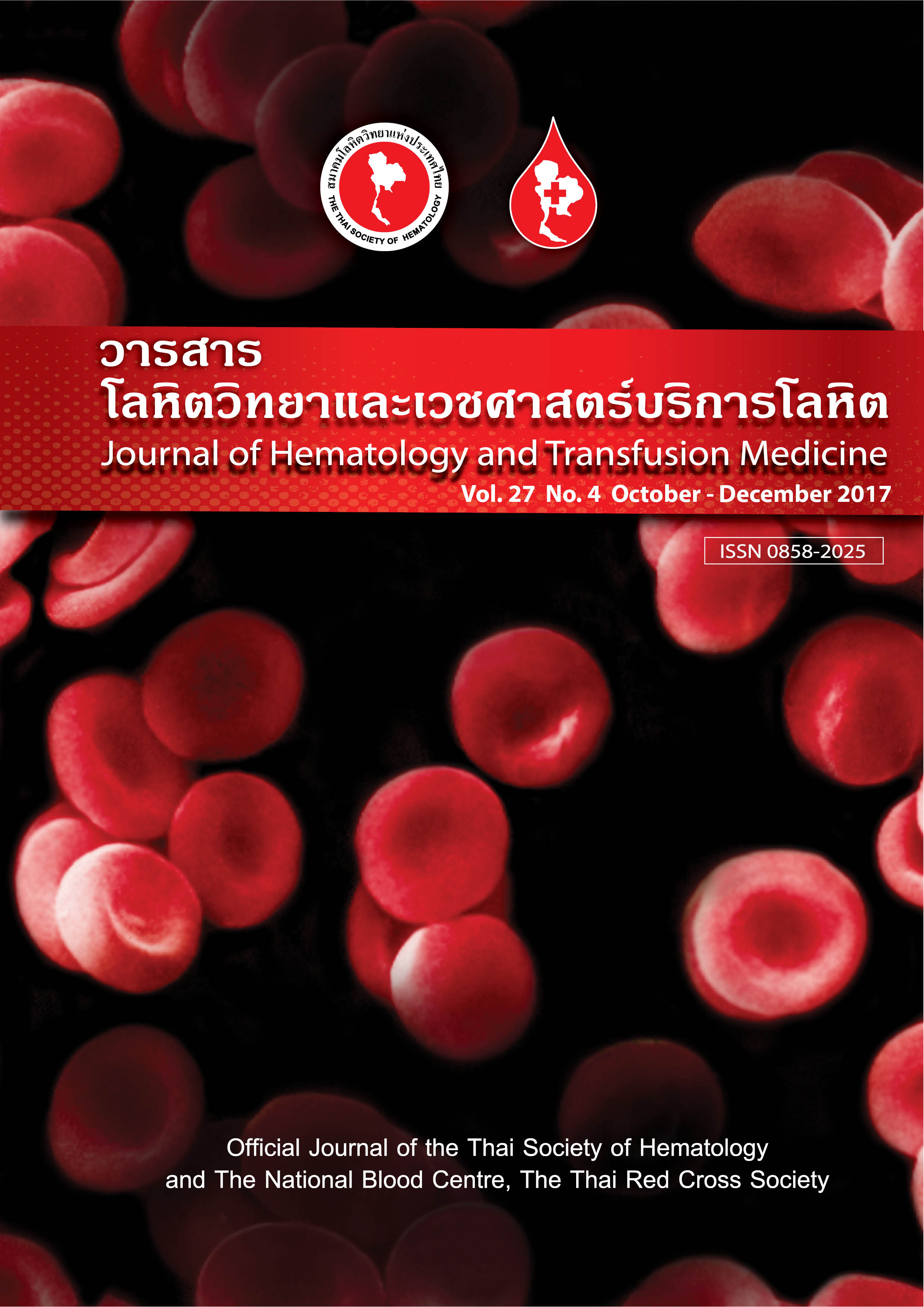Clinical Course of Acute Leukemia in Children with Down Syndrome
Keywords:
Down syndrome, transient myeloproliferative disorder, transient leukemia, acute leukemiaAbstract
Objective: To describe the clinical course of the hematologic abnormalities among children with Down
syndrome, especially transient myeloproliferative disorders (TMD) and acute leukemia.
Methods: A retrospective descriptive study was conducted. Demographic data including a chromosomal study, age of onset, clinical presentations, hematological profiles and outcome of the disease were reviewed among infants with Down syndrome diagnosed with TMD from 2005-2014.
Results: Among 21 infants (M:13; F:8) diagnosed with TMD at median age 1 day (range from 2 hours-69 days), 19 (90.5%) patients had spontaneous regression at age of 36 days (12-231 days) with median follow-up time of 3 years (3.3 months-10.2 years), 2 (9.5%) patients died of severe pneumonia and cardiopulmonary failure. Six (28.6%) patients developed acute myeloid leukemia (AML) at median age of 1 year, 4 months (1.5-24.7 months). Three of 6 patients developing AML died. Clinical manifestations of TMD were asymptomatic (n = 11), hepatosplenomegaly (n = 7), and anemia (n = 3). Hematological profiles in TMD included thrombocytopenia and abnormal blasts with high white blood cell count. Flow cytometry analysis, performed among 3 patients, revealed positive results for CD33 compatible with AML, both TMD and acute leukemia.
Conclusion: Infants with Down syndrome having TMD often had spontaneous regression. However, few patients could progress to acute myeloid leukemia with a mortality rate about 50%. Flow cytometry analysis might be helpful to predict the type of leukemia from TMD. Long term follow-up is warranted.



